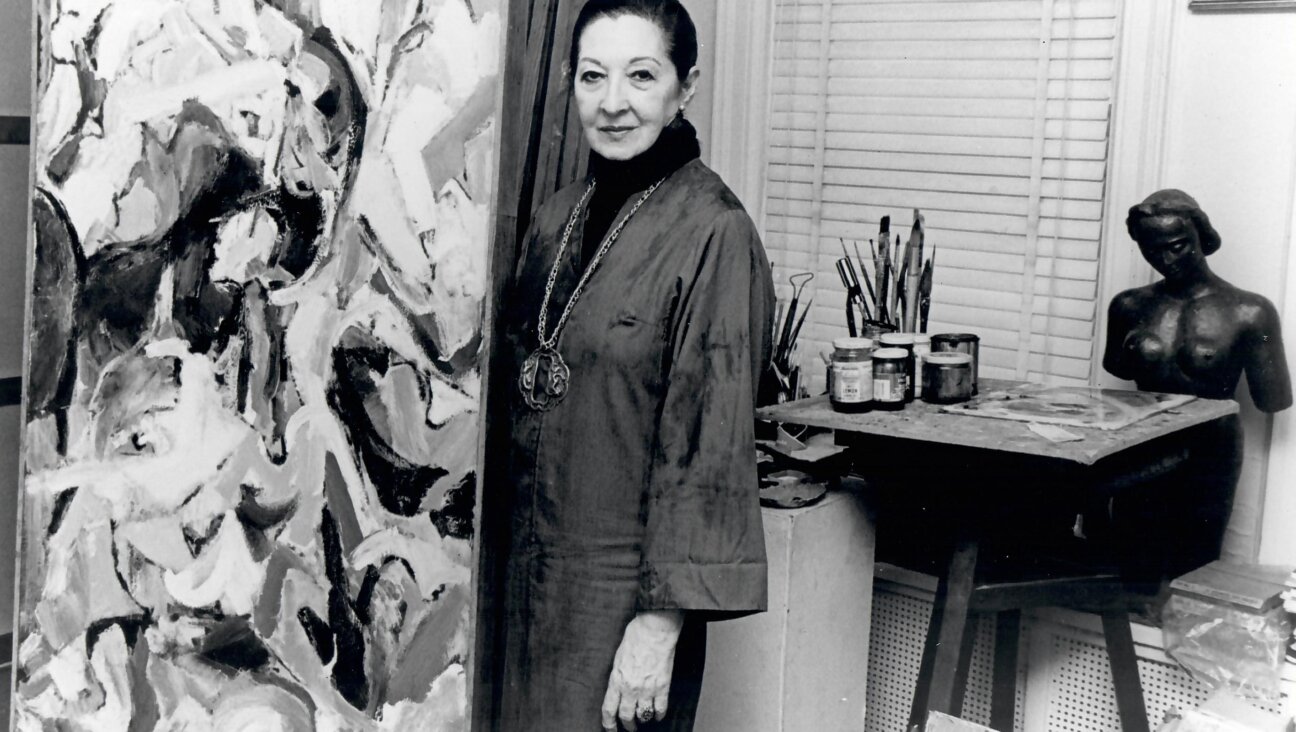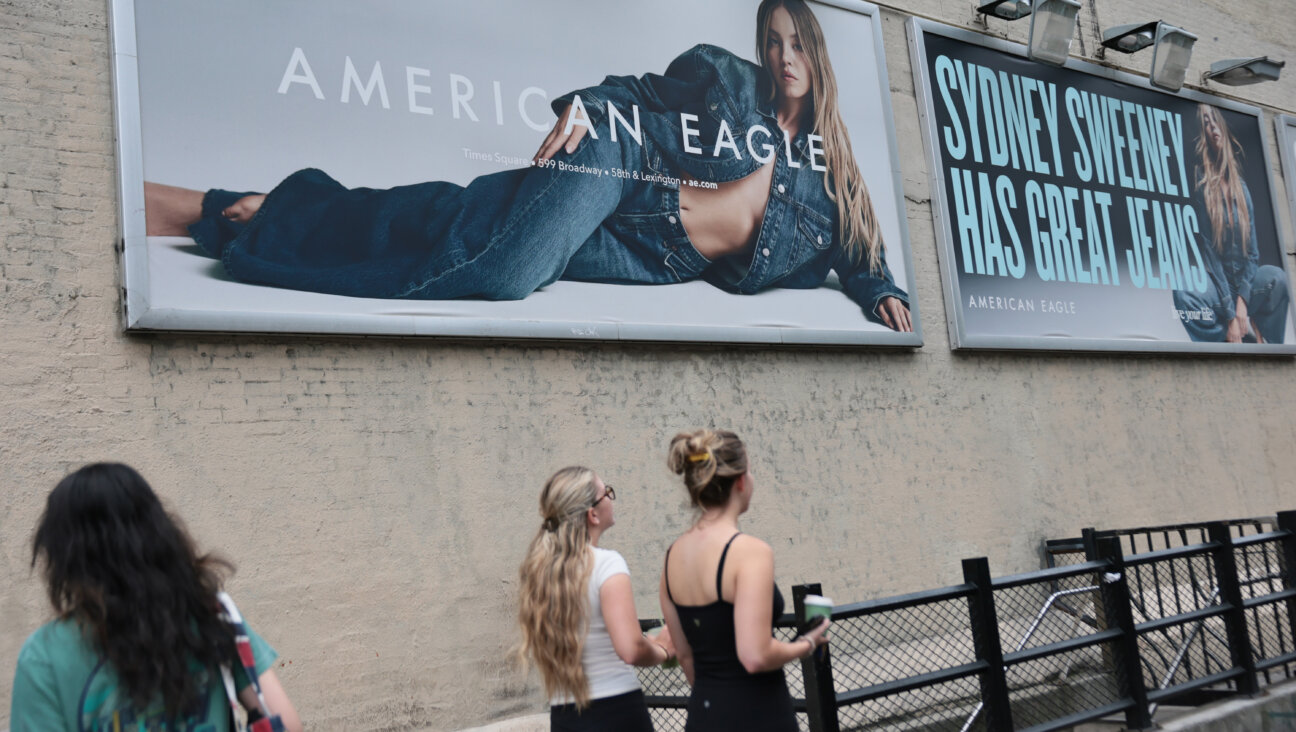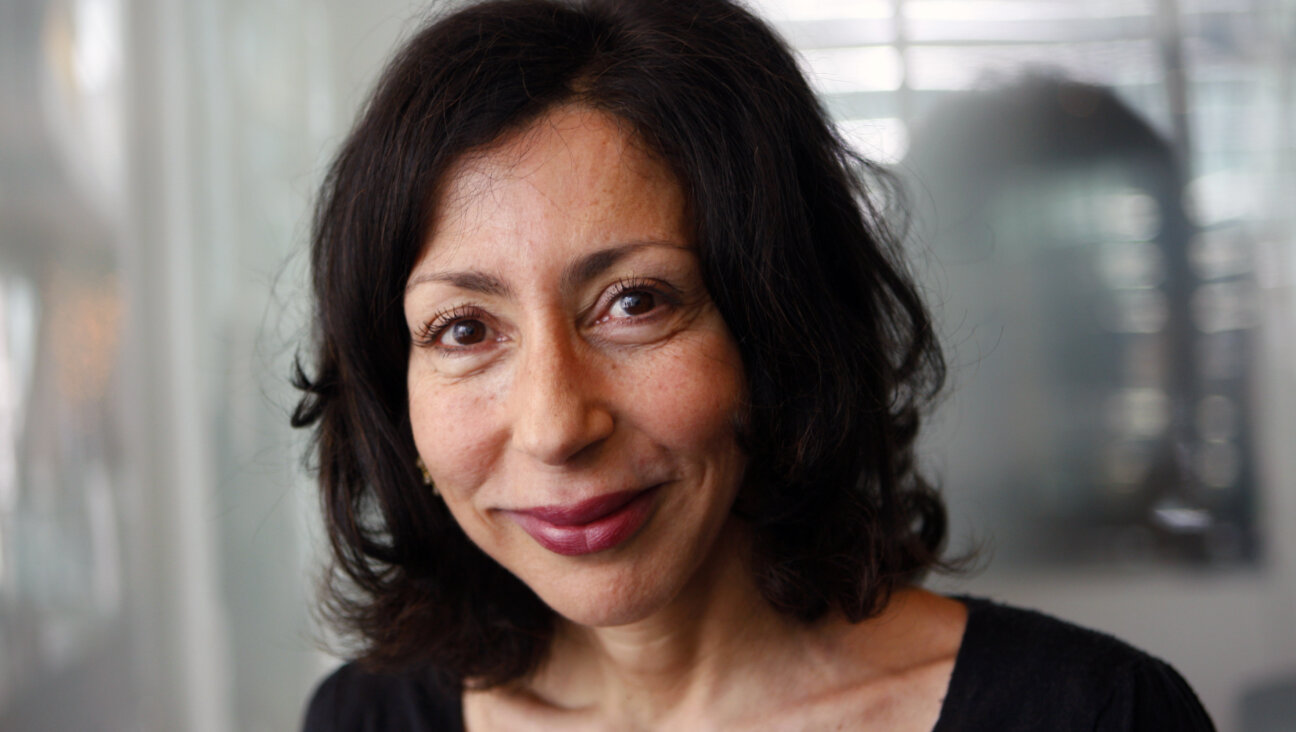Why Jimmy Cagney spoke better Yiddish than just about any other actor in Hollywood

Jimmy Cagney By Getty Images
Of all movie scenes in Yiddish, one of the most popular — that of an increasingly agitated man who vainly attempts to make a clueless Irish cop understand his desire to reach Ellis Island — is not from a Yiddish film, but from “Taxi!” a 1932 film starring Jimmy Cagney.
The previous year, Cagney had electrified the film world playing the title character in “The Public Enemy,” so Warner Bros. quickly followed up to showcase the actor’s other formidable skills. Cagney would soon demonstrate his talent as a song and dance man in the 1933 musical “Footlight Parade” (and later in “Yankee Doodle Dandy,” which won him an Academy Award) But first: Yiddish.
In his eponymous 1976 autobiography, Cagney crowed about his street cred zhargon that he learned from school friends who lived on the Lower East Side. And, while it does not appear that he employed Yiddish as a stage performer in New York, Cagney’s eyebrow raising bilingual skills became famous in Hollywood. (One oft repeated story was how during Cagney’s first negotiations at Warners, the brothers – not realizing his language chops — attempted to outmaneuver him by periodically switching into Yiddish. Cagney not only joined in but also did so in a Yiddish better than theirs.)

Speaking the Mother Tongue: Jimmy Cagney reveals his prodigious gift for language in ‘Taxi.’ By Getty Images
“Jimmy Cagney likes to palaver in Yiddish to cronies in person or on the phone,” legendary gossip columnist Hedda Hopper once gushed. “Cagney’s kosher lingo is very McCoy.”
For “Taxi,” the studio’s pre-production PR hyped Cagney’s facility with the mame loshn. “James Cagney, a New York Irishman,” ran a plug in a syndicated gossip column “speaks Yiddish fluently and has occasion to do so in his next motion picture.” The studio issued an all-Yiddish poster (with Cagney’s first name misspelled) depicting the opening scene which, when it was reproduced it in his 1976 autobiography, was accompanied by Cagney’s sly caption: “Probably the only actor in Hollywood who could read this poster.”

Now Playing at The Strand: Jimmy Cagney said he was one of the few actors in ‘Taxi,’ who could read the poster for it. Courtesy of Henry Sapoznik
So, it is not surprising that in the first scene in “Taxi” — Cagney’s first “name above the title” feature film — the first words out of his mouth are in Yiddish. And in what points to the subtle care taken in crafting this 90-second scene, the entire exchange between Cagney and the agitated passenger is, in the great Jewish tradition, a series of questions answered with questions. (Cagney would later insert Yiddish in other films including the 1940 all-Hibernian flag waver: “The Fighting 69th.”)
But for reasons that are not entirely clear, the Yiddish press paid little attention to Cagney’s linguistic gifts. (The Forverts, in its then-recently launched column “In der velt fun moviz un talkies/In the World Of Movies and Talkies” simply ran a photo of Cagney and co-star Loretta Young with no mention of his Yiddish turn.)
The English language press, however, offered kudos for Cagney’s “palaver.” A review in the Brooklyn Eagle noted that the heartiest laugh of the film came from the audience’s reaction to Cagney’s “pyrotechnical” Yiddish.
When the movie was re-released in 1936, it gained Jewish traction and enjoyed an even longer run than the first time around. The Forverts’ man on the aisle, Bernard Blumenthal, attended a midnight show at Brooklyn’s Strand theater, and cut to the chase in the headline of his May 23 review: “Der ayrisher James Cagney ret in a talkie Yiddish mit a Litvishn aksent/The Irish James Cagney in a talkie speaks Yiddish with a Litvak accent.”).
Blumenthal concluded with: “ven si farvilt zikh Cagney’n, ret er mit a litvishn aktsent; un ven si gefelt im – mit a galitzianer aktsent. Ot a za min madim iz James Cagney/ when it suits him, he speaks with a Litvak accent, and, when he feels like it — with a Galitzianer accent. That’s the sort of mischievous fellow is James Cagney.”
Yet, for all the notoriety and popularity which the scene deservedly generates (one YouTube clip has been viewed over 350,000 times) it was only in the last few weeks, during research I was doing for a lecture on Yiddish film, that anything substantive was discovered regarding the actor with whom James Cagney shared his memorable Yiddish scene.
“Joe Barton” was born Joseph Zousmer on Oct. 29, 1878, in Chisau Romania and came to the United States in 1891. He worked into his teens at his father’s cigar making factory on the Lower East Side.
By 1905, Zousmer was working in burlesque as a “grotesque” or “low” comic (“grotesques” used exaggerated makeup and arch stage dialects in creating character types including hobos, tramps and “Hebrews”) A 1917 Variety review of his burlesque turn complimented him on playing “a clean Hebrew throughout.”

Which Way to Ellis Island:? Joe Barton asks for directions in the 1932 film ‘Taxi.’ By YouTube
Oddly, Zousmer took his stage name “Joe Barton” from a then-widely popular vaudeville comic cyclist who was periodically reduced, as the popularity of “Joe Barton #2” grew — to taking out display ads in the show business press decrying Zousmer’s identity theft and asserting his own originality.
Zousmer arrived in Hollywood during the Depression and signed with Warner Bros. Despite a multi-picture contract, a Dec. 22, 1932, article which described him as “formerly a vaudeville headliner and now a time-to-time actor in the motion pictures” also said he was “cozily living” in a parking lot “out of the flivver he drove on the burlesque circuit replete with bath, electric stove and heat and Murphy bed.”

Nobody’s Perfect: Joe Barton appeared in the George S. Kaufman comedy ‘The Tenderfoot,’ which starred Joe E. Brown. By youtube
Barton’s first assignment was in “The Tenderfoot,” a George S. Kaufman comedy starring Joe E. Brown (today best remembered as Jack Lemmon’s “Nobody’s perfect” paramour in “Some Like It Hot.”) Barton played a junk dealer who appears early in the film where he gives star Brown a lift in his horse and wagon and quickly gets to spout his propulsive Yiddish for comic effect.
This movie led to “Taxi, which in turn led to another Yiddish sequence for Barton, this time in “The Mayor of Hell.” Though this film also starred Cagney (this time as a reformer superintendent for a corrupt boy’s reform school) the two were not reunited onscreen. Barton played “Mr. Horowitz” the father of a boy mixed up with a neighborhood gang.
In a courtroom scene, Barton speaks with a screechy stage Jew dialect veering dangerously close to the kind of grotesque Hebe comedy he perfected in burlesque. But as director Archie Mayo pulls in on him, Barton switches into a heymish heartfelt Yiddish for a poignant and dramatic moment. The actor’s homey, artless — and possibly improvised — Yiddish, like Cagney’s, serves as a utilitarian language whose lived-in presence still leaps off the screen.
Nevertheless, even though Barton was on the Warner Bros. lot (and even getting loaned out to prestige studio Paramount to appear with Al Jolson, Ginger Rogers, Cab Calloway, etc.) he was obliged to take parts in low-budget gangster pictures for “Poverty Row” studios.
In 1937, he was to star in a two-reel comedy series at Columbia Pictures, playing alongside Andy Clyde with whom he appeared in the comedy “McFadden’s Flats” the year before and for which he had received favorable reviews. However, before production could begin, Barton died as the result of a botched minor operation June 7, 1937. He is buried in Acacia Cemetery in Ozone Park, Queens.
Henry H. Sapoznik’s latest lecture is “In the World of Movies and Talkies: Yiddish Language Film 1923-2017”
















